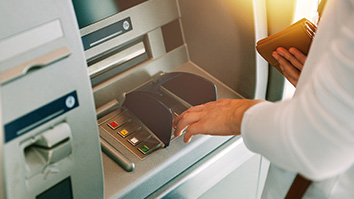Computer vision—emulation of the human visual system—is enabling groundbreaking advances that allow computers to act and react like humans. Applications for computer vision range from monitoring activities at crowded events, to warning drivers of imminent danger, to self-steered robots that can navigate objects easily.
For decades, SRI’s computer vision researchers have pioneered development of technologies that enable systems to see, understand, and react to information captured through sensors. These capabilities, already widely used in security and defense applications, and are now migrating to consumer applications in smart phones, video games, and Internet image search.

are calculated
Computer vision uses cameras and processors to play the roles of eye and brain. Our recent work in food recognition uses vision technology to record and quantify food items to help people make more informed eating decisions. (Read about our technology for license.)
Computer vision uses cameras and processors to play the roles of eye and brain. Our recent work in food recognition uses vision technology to record and quantify food items to help people make more informed eating decisions. (Read about our technology for license.)
Using images captured on a camera-enabled device such as a phone or tablet, our patented technology can generate information about the type of food, quantify the portion, and estimate its nutritional value. The image classifiers are trained to identify and categorize individual food items on a plate from a single image. If multiple images are taken, a volume estimate is calculated to provide an approximation of nutritional information. We also employ contextual clues, such as location, to incorporate data from menus of restaurants in which the image was taken to improve the estimation of calories.

Among the growing number of mobile apps and internet-enabled devices targeting consumer health and fitness, computer vision technology can play an important role by seeing what you are consuming and providing accurate estimates of portions and nutritional value. SRI’s technology may be licensed for use in commercial products.
Food recognition is just one of SRI’s many technologies that are revolutionizing how computers are used to see, understand, and react to the environment around us. To learn more about future directions in computer vision, come hear Norman Winarsky, vice president of SRI Ventures, at the Bloomberg Next Big Thing Summit on June 9 in Sausalito, California.


